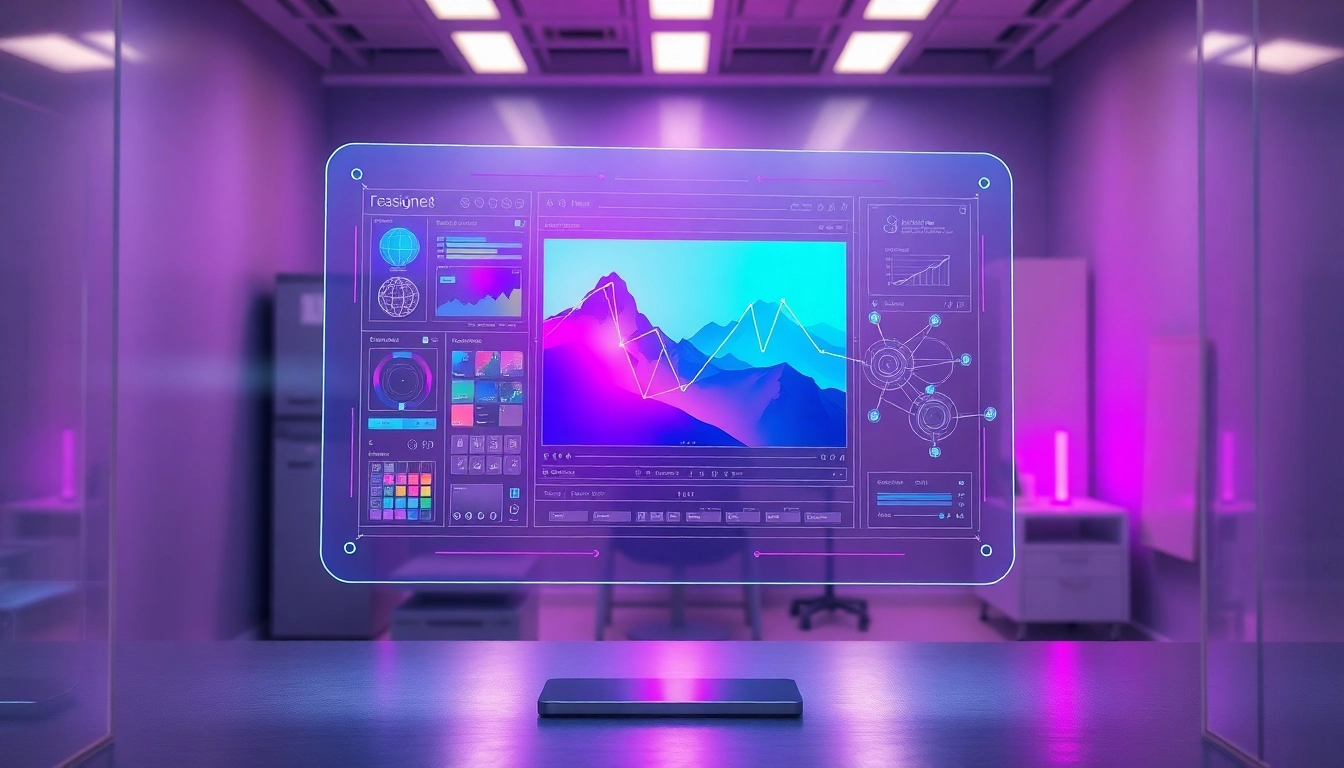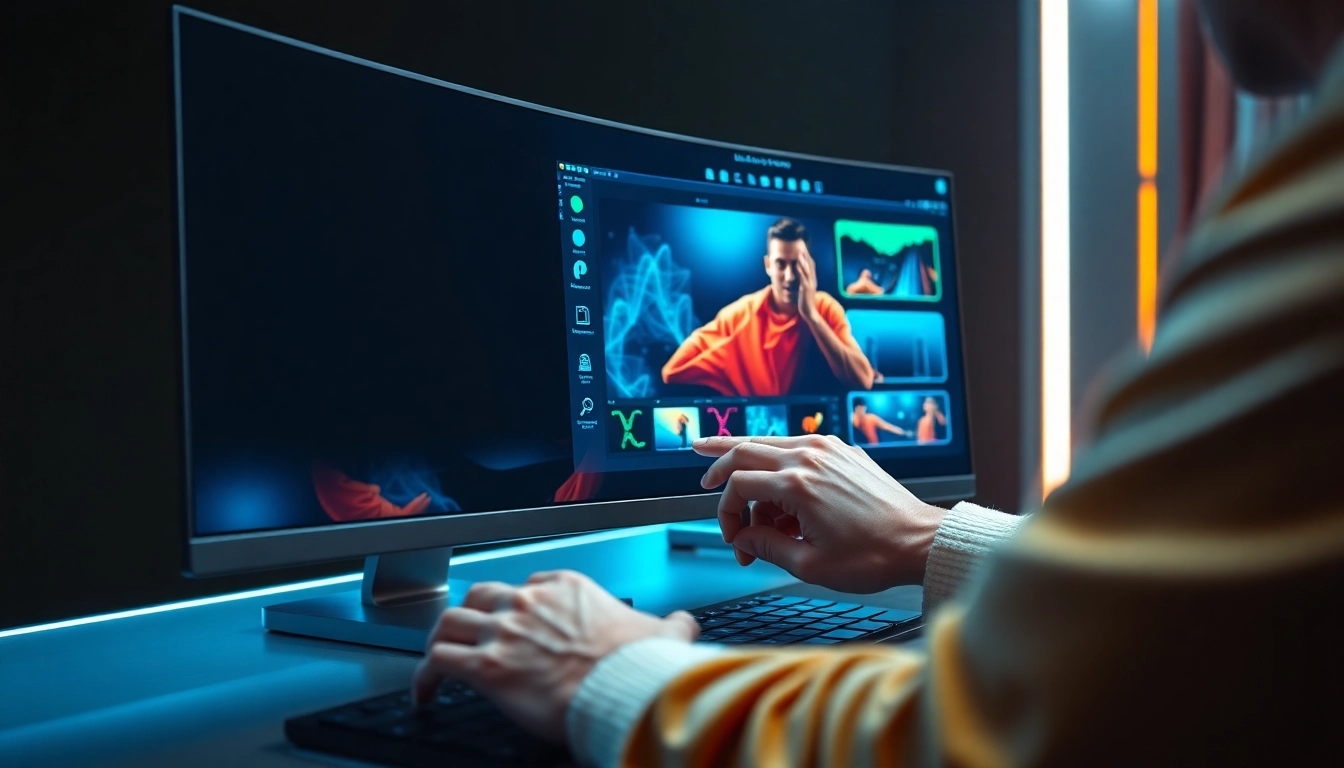Revolutionizing Visual Creativity: The Rise of Nano Banana AI
In the rapidly evolving world of artificial intelligence, one of the most groundbreaking breakthroughs in recent times is the emergence of nano banana ai. This cutting-edge technology claims to redefine the boundaries of image editing, offering capabilities that far surpass those of traditional tools. As AI continues to infiltrate creative industries, Nano Banana AI stands out by promising not just basic image manipulation, but an unprecedented level of understanding and reasoning that mimics human cognition in ways previously thought impossible. This article explores the depths of Nano Banana AI, its competitive edge, the underlying technology, and the profound implications it holds for creators, designers, and enterprises worldwide.
The Evolution of AI-Powered Image Editors: From Basic Manipulation to Advanced Reasoning
The journey of AI in image editing has been remarkable, transitioning from simple filters and adjustments to sophisticated systems capable of complex transformations. Early tools primarily focused on automating repetitive tasks—crop, resize, enhance, and color correction—aimed at casual users and hobbyists. These platforms, while accessible, lacked the depth of understanding necessary for nuanced edits.
As AI research progressed, new models emerged that could interpret images more intelligently. Tools like Flux Kontext and Gemini 2.0 Flash introduced features such as background replacement, angle adjustments, and object repositioning. However, these systems largely relied on pattern recognition and superficial edits, often struggling with consistency, contextual coherence, and 3D spatial awareness.
Enter Nano Banana AI. Unlike its predecessors, it leverages advanced reasoning capabilities, allowing it to comprehend the image’s context, maintain consistency across edits, and understand 3D spatial relationships. This shift from basic manipulation to deep understanding marks a paradigm shift in AI-driven visual creativity—transforming how images are edited, conceptualized, and produced.
Core Features of Nano Banana AI: A Deep Dive
1. Advanced Contextual Understanding
At the heart of Nano Banana AI is its ability to interpret the intent behind user requests. Unlike traditional tools that merely follow explicit commands, Nano Banana AI “reads” the image, grasping its content, style, and subtle nuances. Whether it’s changing the background, modifying lighting, or repositioning objects, the AI comprehends the scene holistically, ensuring edits make sense within the visual narrative.
2. Unmatched Consistency and Accuracy (95-99%)
One of Nano Banana AI’s most touted features is its exceptional accuracy in performing edits. While competitors like Flux Kontext and Gemini 2.0 Flash claim accuracy rates between 20% and 70%, Nano Banana AI asserts a consistency rate of 95-99%. This high precision minimizes the need for manual corrections, saving time and enhancing productivity.
3. 3D Spatial Awareness
Unlike flat image editors, Nano Banana AI incorporates three-dimensional understanding, allowing for realistic manipulation of objects within a scene. This feature is especially beneficial for product visualization, virtual staging, and complex compositing, where depth and perspective are critical.
4. Logical Reasoning and Problem-Solving
Perhaps the most revolutionary aspect of Nano Banana AI is its logical reasoning capability. The system can analyze complex editing tasks, infer user intentions, and solve problems that would typically require manual intervention. For example, if a user wants to change the time of day in a photo, Nano Banana AI can adjust lighting, shadows, and even scene elements to produce a coherent, natural-looking result.
5. Perfect Visual Consistency
Maintaining consistency across multiple edits and versions is a significant challenge for AI tools. Nano Banana AI addresses this by remembering detailed contextual information, ensuring that modifications remain uniform throughout a project. This is crucial for branding, advertising, and other professional applications where brand consistency is paramount.
Comparative Analysis: Nano Banana AI vs Competitors like Flux Kontext and Gemini 2.0 Flash
Basic vs. Advanced Functionality
While Flux Kontext and Gemini 2.0 Flash offer impressive features like background swaps and angle adjustments, they largely operate on pattern recognition without deep understanding. Nano Banana AI, in contrast, comprehensively understands the scene, enabling more natural and contextually appropriate edits.
Accuracy and Reliability
The accuracy gap is substantial. Traditional tools typically deliver results with 20-70% correctness, often requiring manual touch-ups. Nano Banana AI claims an accuracy rate of up to 99%, drastically reducing post-edit corrections and increasing efficiency.
3D and Spatial Capabilities
Most existing tools lack genuine 3D spatial awareness, limiting their ability to perform realistic manipulations involving depth and perspective. Nano Banana AI integrates 3D understanding, enabling complex scene modifications that are seamless and realistic.
Logical Reasoning and Problem Solving
Competitors focus on surface-level edits and pattern-based transformations. Nano Banana AI stands out with its capability to reason through complex editing requests, such as adjusting for different lighting conditions or reconstructing scenes based on minimal input, mimicking human-like understanding.
Transforming Creative Workflows: Impacts and Benefits
For Casual Creators and Hobbyists
Even at its most accessible pricing tier , Nano Banana AI offers tools that simplify complex edits, empowering casual users to produce professional-quality images without extensive technical skills. The platform’s intuitive interface, combined with its contextual understanding, makes advanced editing accessible to everyone.
For Professional Designers and Content Creators
In professional settings, efficiency and precision are non-negotiable. Nano Banana AI’s high accuracy and consistency enable designers to iterate rapidly, maintain brand standards, and push creative boundaries. Its ability to handle complex scene manipulations reduces reliance on multiple tools, streamlining workflows.
For Large Enterprises and Commercial Use
Large organizations benefit from Nano Banana AI’s scalability and enterprise-grade features. Its API integrations, digital watermarking for authenticity, and ability to handle high-volume projects make it ideal for advertising agencies, media companies, and e-commerce platforms looking to produce high-quality visual content at scale.
The Ethical and Moral Dimensions of Advanced AI in Visual Media
As Nano Banana AI pushes the boundaries of what AI can achieve in image editing, it raises essential ethical questions. The ability to generate highly realistic, manipulated images can be misused for misinformation, deepfakes, or infringing on intellectual property rights. Ensuring responsible use involves transparent watermarking, clear attribution, and adherence to ethical standards.
Furthermore, the development of such intelligent AI tools underscores the importance of addressing biases within training data and preventing misuse. The moral focus should be on fostering innovation that enhances human creativity while safeguarding societal trust in visual media.
Future Prospects: A Paradigm Shift in AI-Driven Visual Creativity
The trajectory of Nano Banana AI suggests a future where AI acts as a true creative partner rather than merely a tool. Its reasoning and understanding capabilities could evolve to facilitate entirely new forms of digital art, virtual reality content, and immersive experiences. As AI continues to learn and adapt, we might see systems that can collaboratively generate complex visual narratives, design environments, and even simulate realistic human interactions within images.
This shift promises to democratize creativity further, allowing individuals and businesses to realize visions previously limited to large studios or specialized teams. The concept of “thinking” about images—understanding context, emotion, and purpose—will become central to AI’s role in creative industries.
Why Nano Banana AI is the Future of Image Editing Technology
In conclusion, Nano Banana AI is not just another image editor; it represents a fundamental transformation in how AI interacts with visual media. Its ability to understand, reason, and maintain perfect consistency across complex edits positions it as a true paradigm shift. As the platform continues to develop, its impact will extend beyond simple image modifications, influencing content creation, media production, and even the way we perceive and trust digital images.
The platform’s tiered pricing structure—from accessible plans for casual users to enterprise solutions—reflects its versatility and broad applicability. Whether you’re a hobbyist looking to enhance your photos or a large corporation aiming for high-volume, high-quality visual content, Nano Banana AI offers tools that are revolutionary in scope and capability.
The underlying moral of this technological leap is clear: true AI progress isn’t just about generating pretty pictures but about creating systems that think about images the way humans do—comprehending context, maintaining fidelity, and reasoning through complex tasks. As Google’s google nano banana) continues to make headlines, it’s evident that AI is entering a new era—one where visual creativity is limited only by imagination, not technology.



